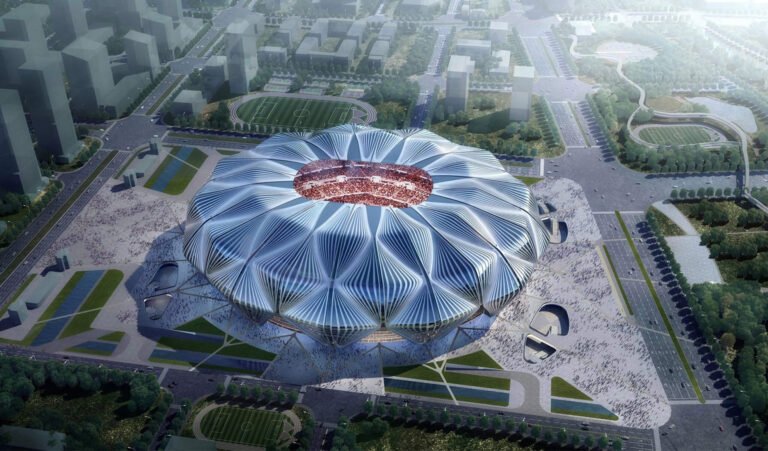The Kardashians Shape Our Homes and What’s Inside Them. Change My Mind.
Browse the Architizer Jobs Board and apply for architecture and design positions at some of the world’s best firms. Click here to sign up for our Jobs Newsletter.
The Kardashians are undeniably larger than life; controversial and ubiquitous trendsetters to the masses, yet simultaneously abhorred by many. Over the course of the last 15 years, their family has cemented itself as a constant fixture on our screens, providing carefully curated glimpses into increasingly extravagant homes and associated offices as they navigate “drama” and the work necessary to further expand their various beauty empires. Say what you will about them but their impact on American culture is indisputable and can be traced across multiple industries, including beauty, fashion and even architecture.
As Keeping Up With the Kardashians (2007-2021) documented the ascent of the Kardashian-Jenner family from reality television curiosities to established celebrities, the show’s cameras also laid bare the evolution of the family’s changing lifestyle. The show’s camerawork and editing amplified their increasingly lavish material surroundings, drawing on the success of prior shows like MTV Cribs (2000-present), which established the public’s obsession with celebrity homes. Across the roughly decade and a half that KUWTK was on the air, everyday social anxieties played out in carefully curated Los Angeles mansions that grew larger and more extravagant as the seasons wore on. As their popularity grew, the Kardashians engaged in a continual reconfiguring of their lifestyle and associated properties, acting as stewards of luxury real estate as they chased the American Dream, in continual pursuit of larger, more expensive homes.
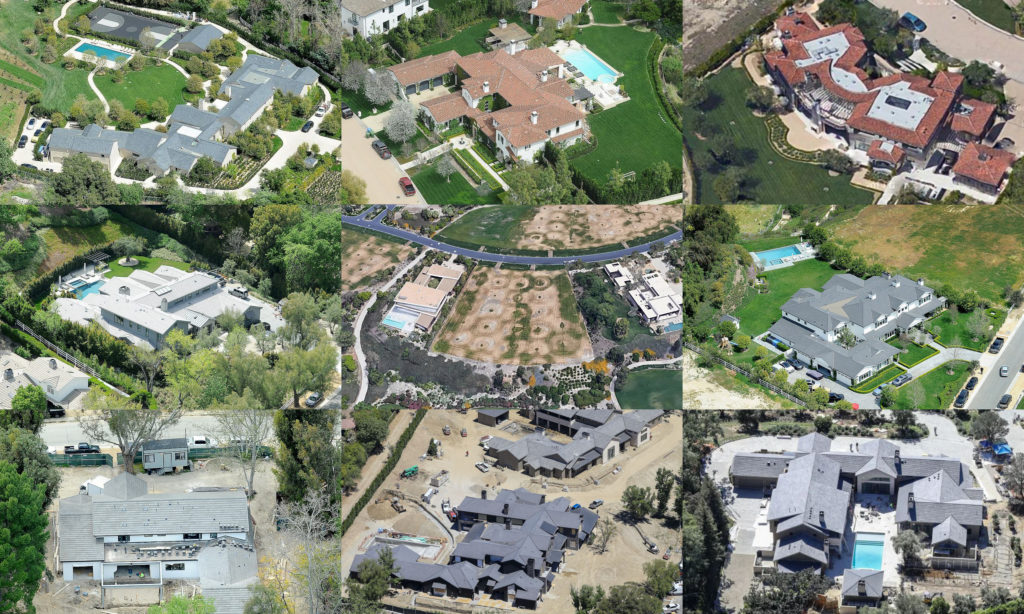
An aerial photo collage detailing the various Kardashian homes. © the author
While no one would contend that the Kardashians are rigorous students of the architectural discipline, it is indisputable that their role as lifestyle influencers has had a dramatic effect on what types of spaces large swaths of the public aspire to live and work in. Our collective fascination is perhaps due in part to the fact that both Kim and Kanye have a self-professed keen interest in contemporary architecture. Over the last few years alone, they have bought or commissioned multiple projects designed by starchitects such as Tadao Ando and Kengo Kuma, and the home they resided in as a couple featured interiors re-imagined by Belgian tastemaker Axel Vervoordt.
Kim and Kanye tend to favor a form of contemporary architecture that exists in a certain state of contradiction — restrained, minimalist interiors that take inspiration from Japanese design, yet traverse floor plans that often break the 10,000 square foot mark. Post-divorce, Kanye is currently working on a secretive, subterranean project in rural Wyoming with the austere Swiss Architect, Valerio Olgiati, a practitioner of minimal extravagance.

A plan for Kanye West’s subterranean home in Wyoming by Valerio Olgiati © afasia
There is an inherent irony to the fact that Kim has publicly professed her love of contemporary Japanese architecture, and its ability to provide moments of Zen refuge, even as a team of cameramen and production assistants film her family’s every move from within. Monochrome, monastic interiors complete with sparse, extremely high-end furniture tend to define these spaces. The design language creates a sort of fuzzy, off-white canvas backdrop, foregrounding the clothing and products they advertise within as the cameras roll. Their homes accommodate multiple typologies simultaneously; as domestic spaces of refuge, places of business and multimedia performance.
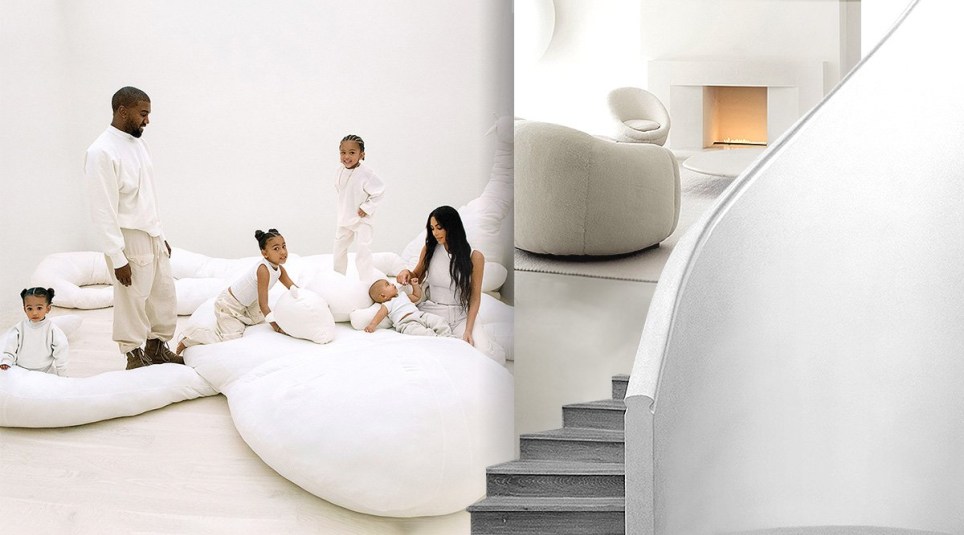
Clean, minimal spaces with organic furniture in shades of off-white tend to dominate the West’s interiors. © Jackie Nickerson
Perhaps nowhere do we get a more carefully curated view of the domestic and commercial spaces that this family operates in than during the opening sequence of Hulu’s new show, eponymously named The Kardashians. As Anderson. Paak recites the lyrics “Now we makin’ money”, we fall from the sky as a first-person view (FPV) drone swoops down from the surrounding Los Angeles Hills, cutting to reveal an expansive backyard where Kourtney and her current boyfriend, Travis Barker, stand motionless to provide scale to an otherwise massive, unmemorable property. After we fly through Travis’ legs, we are brought up to a balcony on the second story of the home, where Kourtney appears to animate the scene and round up her kids for a trip to Kim’s. The camera then flows into the interior of the home, revealing a dazzling array of large living spaces with floor to ceiling doors and glazing that breaks down the boundaries between interior and exterior in this temperate California climate.

We arrive through Kourtney’s backyard, stretching far into the California desert. © Youtube
As we transition from one family member to the next, without pausing to consider how much real estate this family collectively owns in close proximity to one another, we find ourselves flying through an active construction site. The camera sails under scaffolding and through an open window, then under a ladder in the living room in use by a worker (bad luck!), before moving back outside to encircle Khloe on the phone, as she expresses her excitement that the construction on her new home is almost finished. Here the intent is clear, an empowered business woman has assumed the role of Foreman, overseeing the small army of nearly invisible staff, laborers and contractors that construct and maintain these massive homes in a state of near perfection.
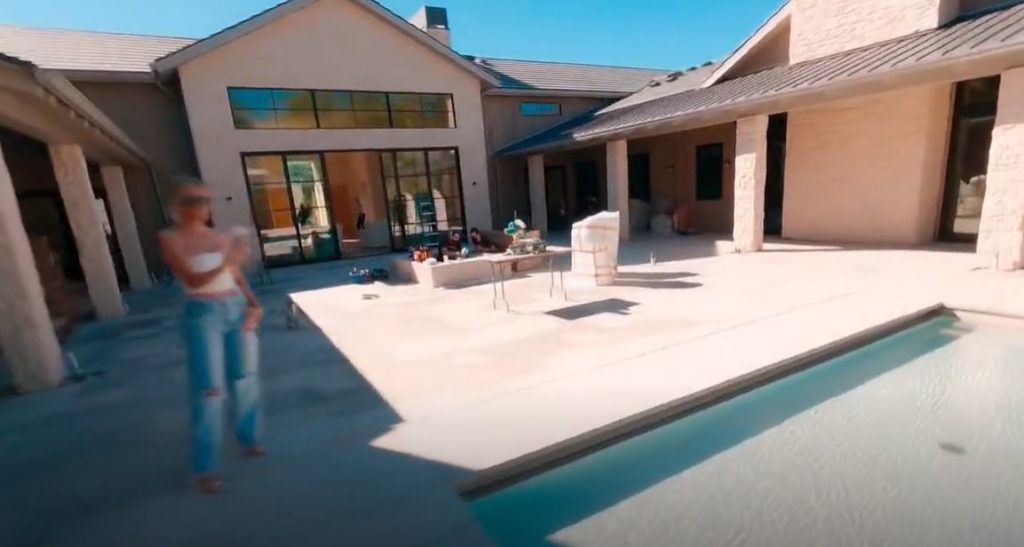
Khloe facetimes a friend from the construction site of her future home. © Youtube
The production’s decision to use a drone to maneuver through all of these spaces is telling, reflecting the notion that “behind the scenes” footage no longer exists as there is almost 360 degrees of access in any given interior, while these women operate a wide range of businesses at all hours. In today’s world, nothing is truly private, and celebrities know that reality all too well, whether they want to reveal their spaces to the public or not. Early seasons of KUWTK tended to provide false establishing shots of the sister’s homes from the street in an effort to retain some form of anonymity, but this is an all but futile endeavor today. Websites such as Virtualglobetrotting make celebrity home snooping almost too easy, as anyone with an internet connection can access an virtually real-time satellite captured 3D image of a home with the click of a button.
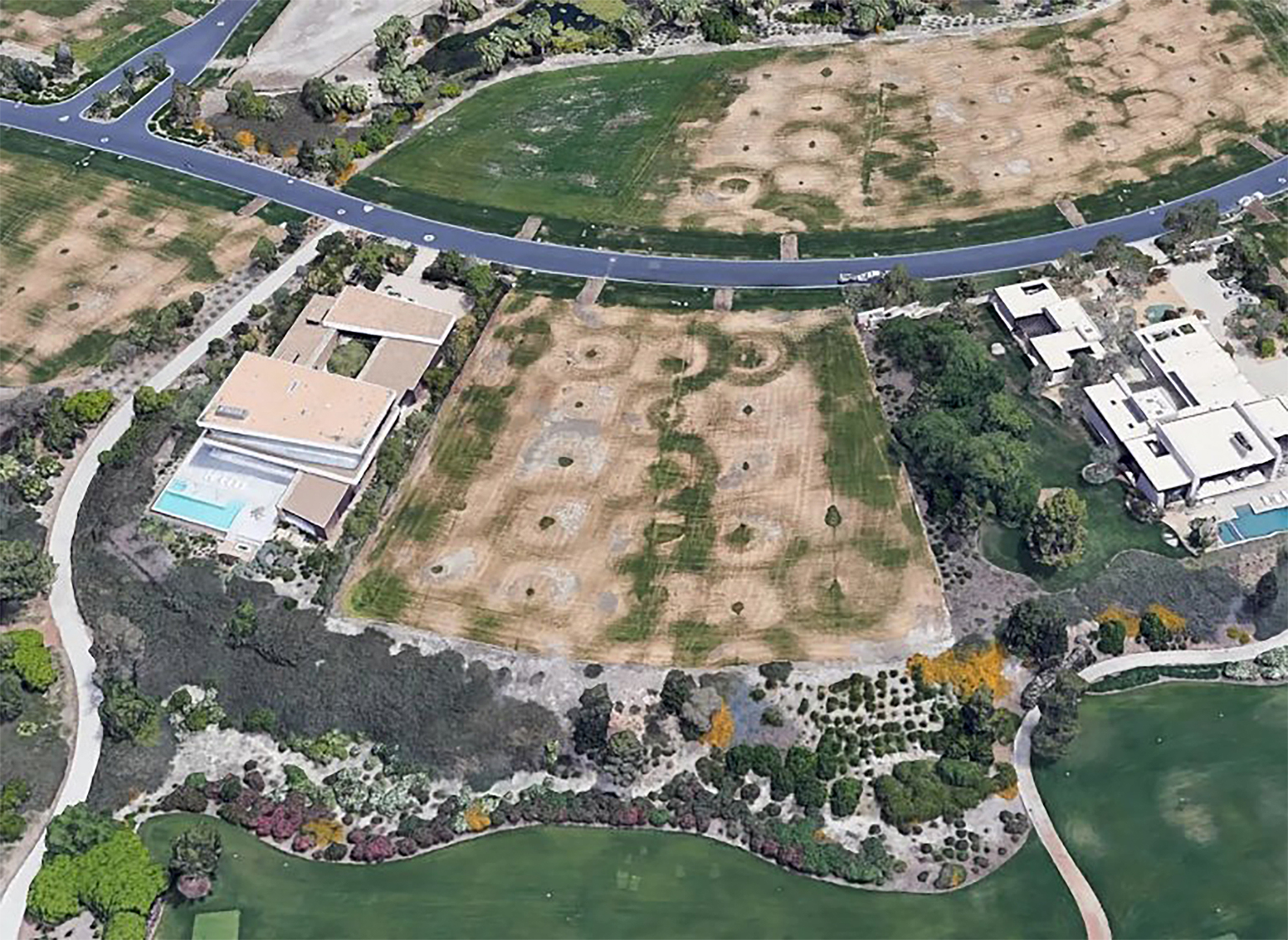
The plot of Kim’s future Tadao Ando designed home. © Virtual Globetrotting
Along with the homes showcased on The Kardashians, other television shows such as Succession have had a verifiable impact on sales surrounding the properties used for filming, which operate as a form of veiled real estate advertisement for the splashiest of apartments and mansions, often coming on the market shortly after the episodes in which they are featured have aired. When one considers staging a luxury apartment or home for a sale, why not animate the interiors with actors or celebrities uttering memorable lines, in addition to curating the selection of furniture? In doing so, the resulting footage will surely have a more widespread, culturally resonant impact for potential buyers than a static image or walk-through video generated by a realtor ever could. Whether members of the Kardashian family enter into mutually beneficial agreements with realtors to showcase the homes they want to buy or sell is anyone’s guess, but their very existence in these spaces as cameras roll perpetuates a sort of endless, aspirational open house on our screens. It is this cross-pollination of reality television, contemporary architecture and the real estate market that positions shows such as The Kardashians as the people’s authority on where and how we should aspire to live.
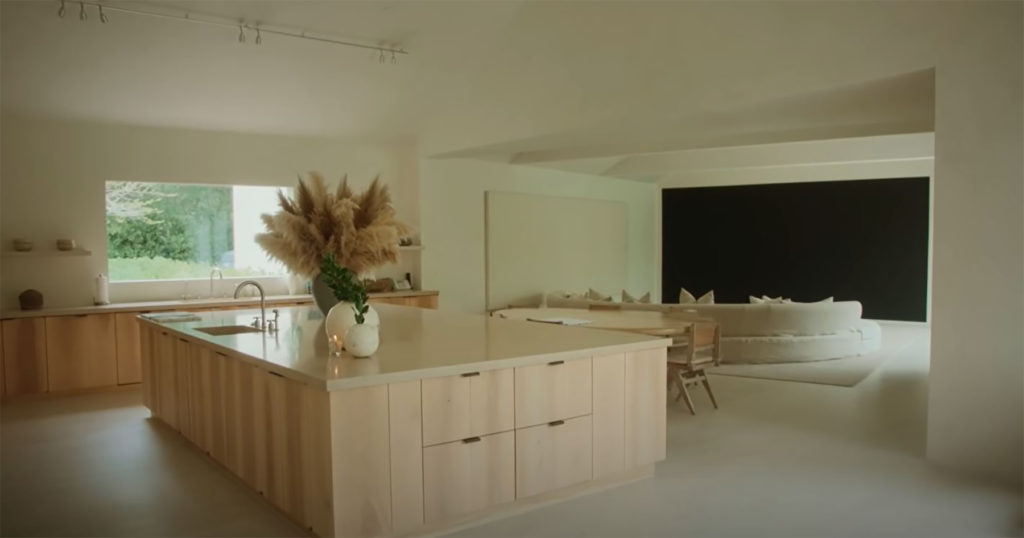
An impossibly large kitchen island in Kim’s home. © Youtube
Herein lies the fundamental crux of the issue; the lifestyles that moguls like the Kardashians perform and sell with great effect have always been wildly unattainable and unsustainable for the vast majority of society. If these are the homes and spaces we are taught to desire, 99% of society will be left wanting. Similarly, the rapid rise of successful influencer lifestyles, born from the need to consistently generate new content, breeds an accelerated, inexhaustible desire to acquire and promote the newest commodities at all scales; it is an endeavor that is unhealthy for all and certainly unrealistic for the rest of us. That being said, can the architectural discipline at large learn anything from the Kardashian’s mastery of branding, in an effort to more effectively disseminate the critically important issues driving design today?
The Kardashians’ ability to lure architects from the other side of the world, such as Ando and Kuma, to help define and promote interior styles to the masses should be seen as a testament to their gravitational pull, although it is clearly one that speaks firmly to a capitalist culture of want. The very definition of their work is to inspire and guide the actions of others; and the continual reconstruction of their identities and bodies goes hand in hand with the architecture they reside in.
Browse the Architizer Jobs Board and apply for architecture and design positions at some of the world’s best firms. Click here to sign up for our Jobs Newsletter.



